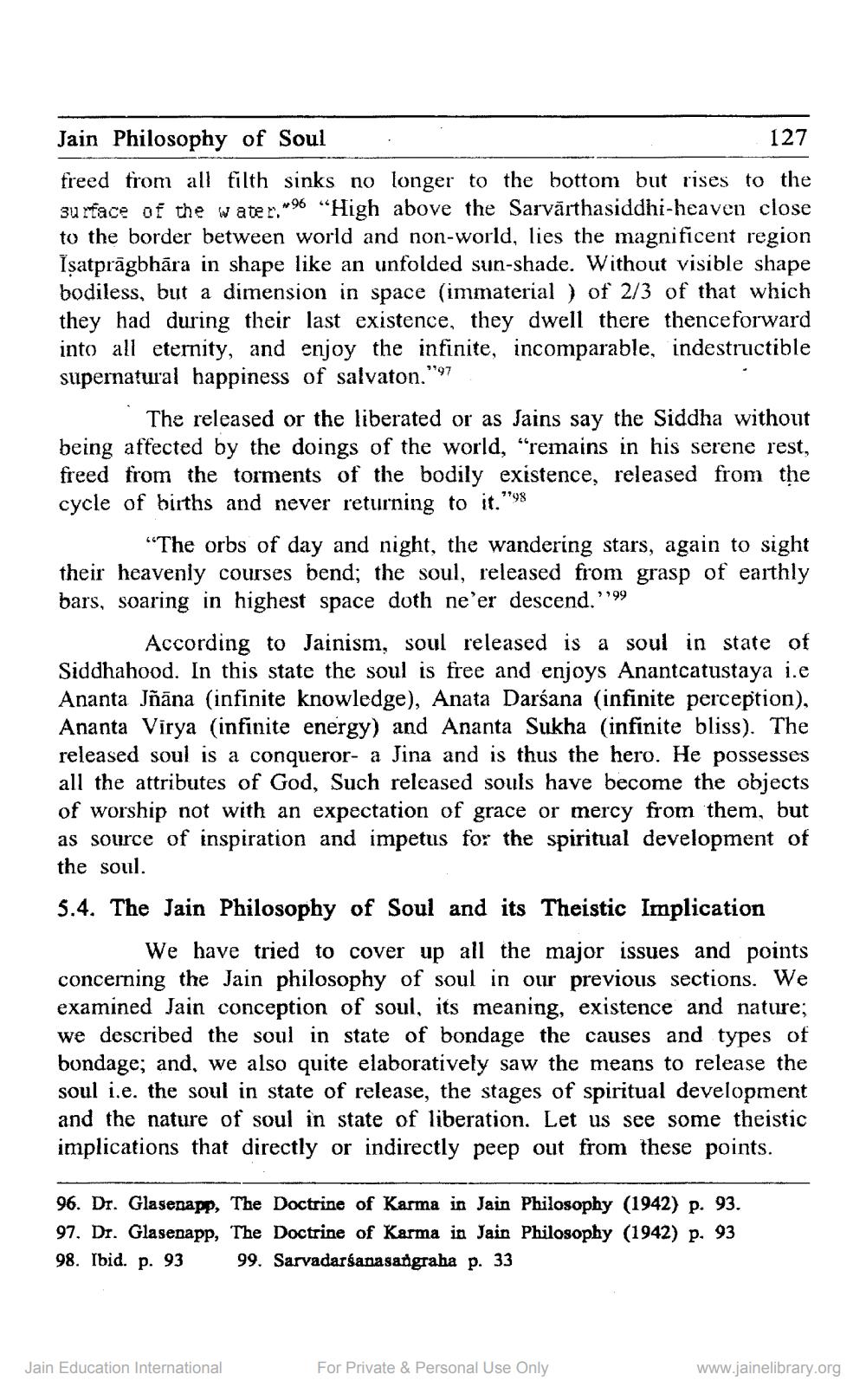________________
127
Jain Philosophy of Soul freed from all filth sinks no longer to the bottom but rises to the zu rface of the water. 96 “High above the Sarvärthasiddhi-heaven close to the border between world and non-world, lies the magnificent region Işatprāgbhāra in shape like an unfolded sun-shade. Without visible shape bodiless, but a dimension in space (immaterial ) of 2/3 of that which they had during their last existence, they dwell there thenceforward into all eternity, and enjoy the infinite, incomparable, indestructible supernatural happiness of salvaton."97
The released or the liberated or as Sains say the Siddha without being affected by the doings of the world, "remains in his serene rest, freed from the torments of the bodily existence, released from the cycle of births and never returning to it.""98
"The orbs of day and night, the wandering stars, again to sight their heavenly courses bend; the soul, released from grasp of earthly bars, soaring in highest space doth ne'er descend.''99
According to Jainism, soul released is a soul in state of Siddhahood. In this state the soul is free and enjoys Anantcatustaya i.e Ananta Jñāna (infinite knowledge), Anata Darśana (infinite perception), Ananta Virya (infinite energy) and Ananta Sukha (infinite bliss). The released soul is a conqueror- a Jina and is thus the hero. He possesses all the attributes of God, Such released souls have become the objects of worship not with an expectation of grace or mercy from them, but as source of inspiration and impetus for the spiritual development of the soul. 5.4. The Jain Philosophy of Soul and its Theistic Implication
We have tried to cover up all the major issues and points concerning the Jain philosophy of soul in our previous sections. We examined Jain conception of soul, its meaning, existence and nature; we described the soul in state of bondage the causes and types of bondage; and, we also quite elaboratively saw the means to release the soul i.e. the soul in state of release, the stages of spiritual development and the nature of soul in state of liberation. Let us see some theistic implications that directly or indirectly peep out from these points.
96. Dr. Glasenapp, The Doctrine of Karma in Jain Philosophy (1942) p. 93. 97. Dr. Glasenapp, The Doctrine of Karma in Jain Philosophy (1942) p. 93 98. Ibid. p. 93 99. Sarvadarśanasangraha p. 33
Jain Education International
For Private & Personal Use Only
www.jainelibrary.org




